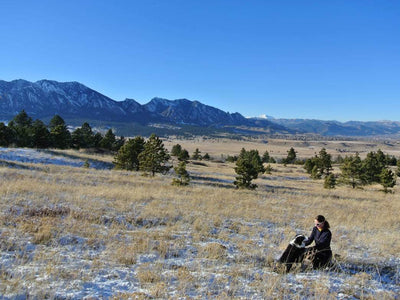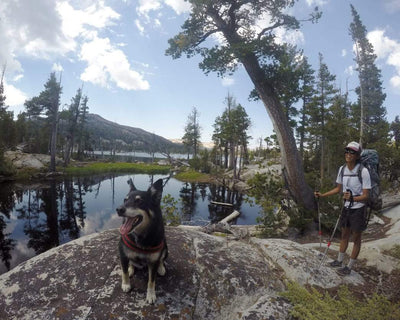An Introduction to Hammock Camping
As you rock gently in the cool breeze while watching a glowing sunset, you will soon understand the appeal of hammock camping. In Alabama and throughout the South, people have swapped their tents for hammocks to rest more comfortably while camping and to feel closer to nature.
In warm, humid conditions, the interior of a tent can feel stuffy, while a hammock allows cool, comforting air to flow around you. Plus, a hammock cradles you in soft fabric and eliminates the aches and pains of sleeping on hard ground.
With a hammock, you also have more freedom to sleep where you please. If a campsite doesn’t have a proper patch of clear, flat land for your tent, no worries. You just have to find two well-spaced trees (which isn’t difficult in an Alabama forest). In your hammock, you can nod off while gazing at a starry sky, while folks in their tents are stuck staring at nylon walls.
If you think hammock camping sounds tempting, check out these expert tips on choosing gear and setting up a comfortable sleeping system. With a little knowledge, you can avoid rookie mistakes and ensure that your first outing is a success.
Choosing a Hammock
There are a wide variety of hammock designs on the market, plus all sorts of accessories, such as straps to hang the hammock, rain flies, mosquito nets, and quilts for cold weather If you have a limited budget, and you are only going to camp in clear, warm weather, you can start simple and just buy a hammock and straps. But keep in mind that in the future you might need a fly, bug net, and cold-weather accessories. With most brands, you can buy the various items individually, or purchase kits that combine many of the pieces and can save you a bit of money in the long run.
Hammock Sizes
Most companies offer several hammock sizes, including singles, doubles, and even extra-large models. In general, most hammocks measure between 9 and 11 feet long and can hold up to 300 or 400 pounds. According to many manufacturers, their best sellers are double hammocks. While pairs of people use them, individuals also like to sleep alone in a double and wrap the extra fabric around them for added warmth (even in warm months, you can get chilled in the early morning hours). As you choose between a single and double, keep in mind that two people will be pretty snug if they sleep together in a double. You have to *really *like your partner.
Hammock Weight
Some people prefer hammock camping because it allows them to ditch an armful of traditional gear and carry a more nimble sleeping system. As you compare brands, you’ll see that they all use similar nylon fabrics that are lightweight and breathable. Also, one company’s single or double hammock will weigh about the same as a competitor’s products. However, a couple of manufacturers offer super lightweight hammocks that weigh less than 7 ounces, which could be a good choice if you want are planning a backpacking trip.
Choosing Straps
When you sling your hammock, it’s important to use the wide straps that manufacturers produce, because they have minimal impact on trees and keep them healthy. If you rig up your hammock using rope, you could cut into the bark and do serious damage. Also, manufacturers’ straps usually include several loops, which allow you to adjust the length easily.
Typically, straps are an inch wide and about 9 feet long, though some companies make straps with two to four extra feet of length. Sometimes, people will get longer straps for traveling out west where trees can be larger. Most straps weigh about 11 ounces, but you can also get lightweight straps that are just over four ounces.
Warding Off Mosquitoes
You’re not going to sleep a wink if mosquitoes are feasting on your face. If you plan to camp in a buggy area, consider a hammock with an integrated mosquito net. With some models, the netting is attached to the top of the hammock. While these work pretty well, be aware that mosquitoes can penetrate the hammock fabric beneath you. In other models, a net slips over the bottom and top to encase the hammock completely. As you look at various models with mosquito nets, consider how easy it is to enter and exit the hammock. With some, you enter through a horizontal, vertical or L-shaped zipper, while others have overlapping flaps of fabric, or an opening with a Velcro-type closure.
If you don’t want to invest in a mosquito net, you can cover up with clothing and wear a head net. Also, some campers apply permethrin to their hammocks to help repel mosquitoes.
Shelter From the Elements
While a hammock puts your closer to nature, it also leaves you more exposed to the elements. Unless you’re 100 percent certain that there will be no precipitation in the forecast, you should think about buying a rain fly. Usually made of nylon or polyester that’s coated with polyurethane, the fly will shield you from rain and snow, and also block chilly winds and trap heat. On the market you’ll find a wide variety of rainfly options, from streamlined models that weigh around eight ounces, to larger ones that weigh 25 ounces and almost cover you like a tent. While some are rectangular, others have a diamond shape, which allows you to secure the fly closer to the ground for more coverage.
Cold-weather Accessories
They call it "cold butt syndrome." When you sleep in a hammock, your body tends to get much colder in areas where your body presses more heavily against the hammock fabric. In these areas, you’re more exposed to wind and cold air, and you need to take extra steps to insulate yourself.
If you use a sleeping bag in your hammock to stay warm, your body will compress the insulation below you and reduce its ability to keep you warm. A better strategy is to use an underquilt, which you string up beneath your hammock. This creates a layer of air between the quilt and the hammock and traps heat to provide more insulation. You can pair this with a top quilt and use clothing layers to keep warm.
Keep in mind that some hammocks have a compartment that holds a sleeping pad, which will provide some insulation beneath you.
Bonus Tips
Practice at home If possible, practice setting up your hammock system at home or in a nearby park before you go camping. If you arrive at your campsite when it’s dark, rain, or right after a tiring drive, you’ll be frustrated as you attempt to rig your system for the first time.
Use a pillow To stay warm in winter, you should prevent your skin from pressing against the hammock fabric as much as possible. Try to cover your neck and shoulders as you sleep, and consider using some sort of pillow, which could be a stuff sack filled partially with clothes.
Seek natural shelter As you set up your hammock, a main goal is to deal with potential wind. Rather than setting up your hammock in exposed areas, move farther into the forest to enjoy the natural sheltering effect of the surrounding trees. Also, seek out natural wind breakers like rock formations, and think about hanging a tarp between two trees as an extra layer of protection.
Written by Marcus Woolf for RootsRated in partnership with BCBS of AL.




